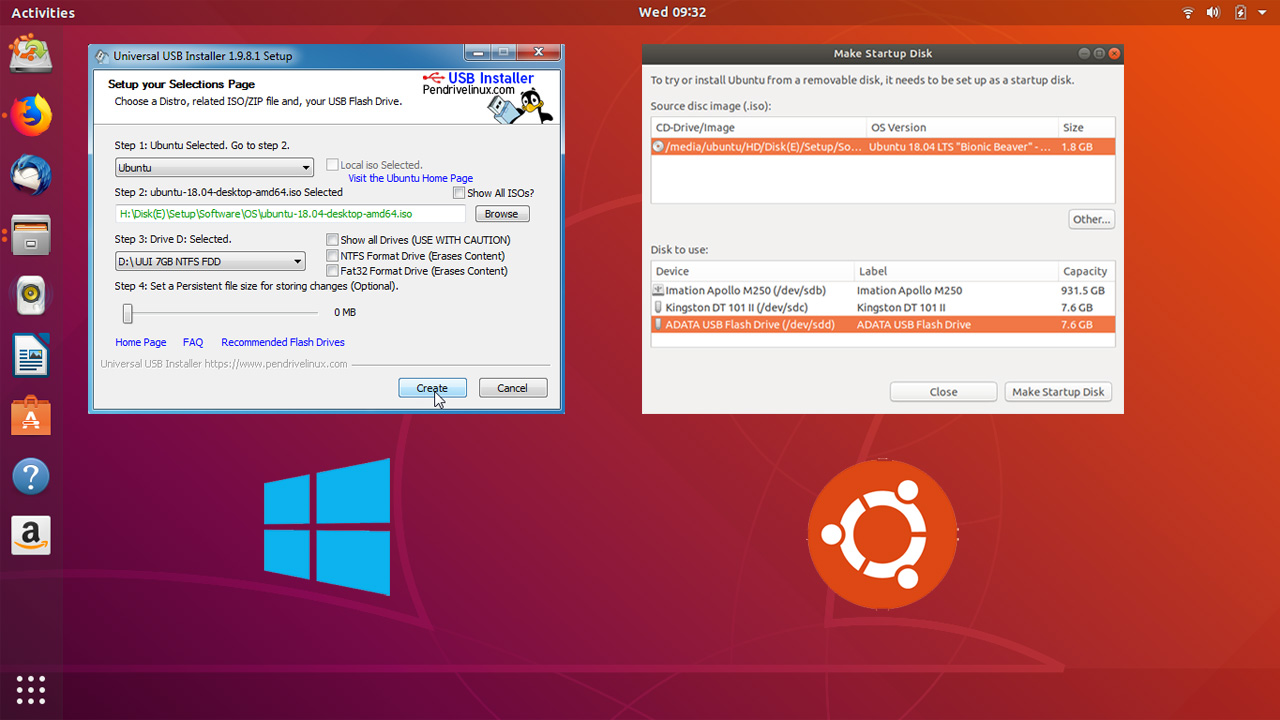
Locate your Ubuntu ISO file and then click Open.įrom the Device drop-down list, select the device drive of your USB flash drive. In the file type drop-down list, select *.* so you can see all files, regardless of file extension. Download the Win32 Disk Imager utility from the Sourceforge Project page as an installer file, and run it to install the software.Īfter running the Win32 Disk Imager utility, click the blue folder icon in the top-right corner to browse for a disk image.Here's how to use it to create a UEFI bootable Ubuntu USB drive: IMG files to SD and USB cards and allow booting from these devices.

Win32 Disk Imager is a simple disk imaging utility to write. Method 2: Create UEFI Bootable Ubuntu USB Drive Using Win32 Disk Imager Wait for the burning process to be completed. Start the ISO2Disc application, then click the Browse button to locate the Ubuntu ISO file you've downloaded.Ĭlick the " Burn to USB Flash Drive" option, choose the USB drive attached to your computer, and then select " GPT (required for UEFI boot)" partition style.Download the freeware ISO2Disc and install it on your Windows-based computer.Just grab a copy of Ubuntu ISO file and you can simply create a UEFI bootable USB drive. ISO2Disc is a lightweight yet powerful freeware designed to create bootable CD or USB drive from ISO image. Method 1: Create UEFI Bootable Ubuntu USB Drive Using ISO2Disc

A USB flash drive (at least 2GB is recommended).




 0 kommentar(er)
0 kommentar(er)
